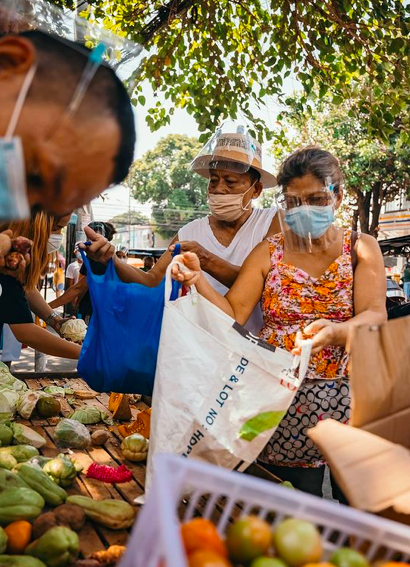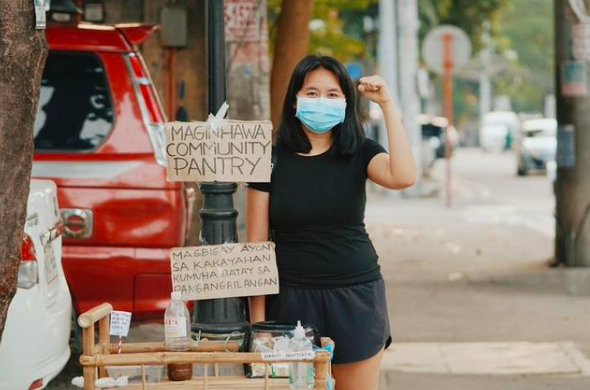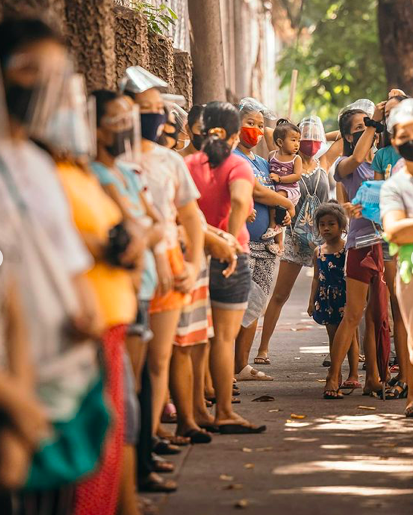This website uses cookies so that we can provide you with the best user experience possible. Cookie information is stored in your browser and performs functions such as recognising you when you return to our website and helping our team to understand which sections of the website you find most interesting and useful.

The COVID-19 pandemic brought about many revelations that forced everyone to reassess. Amidst the challenges and difficulties, it showed that a holistic and unified approach trumped a profit-centred individualistic mindset. Rather than just striving to return to “normal”, we are seeing more countries promising to build back better. In fact, thanks to vaccinations, a transition to sustainability, and international aid, the World Bank already predicts a 4% expansion in the global economy this year. It must be noted that this growth will no doubt be fuelled by wealthier countries with stable healthcare sectors.
Meanwhile, economic recovery in developing countries will be slower. In 2020, the World Bank predicted that these emerging markets will likely shrink by 2.5%. While this might seem trivial on a global scale, an article on how the pandemic has caused a global recession by FXCM explains that with poverty affecting millions of people, a slight recession will have long-lasting repercussions on those in developing countries. The COVID-19 pandemic has brought about business closures, inflation spikes, and widespread unemployment. And these effects are all the more salient in developing countries like the Philippines.
In response to this, private citizens are coming together to bridge ever-present socio-economic gaps through community aid, particularly in the form of community pantries. Through these community pantries, lower-income families have received essentials in their time of need. As the Philippines’ COVID-19 cases begin to increase again, these compassion-driven efforts are helping mitigate the pandemic’s effect.
But before we dive into the details of this humble yet gracious gesture, let us look back at 2020 in the Philippines.
The Philippines During the COVID-19 Pandemic
After the first COVID-19 case hit the Philippines in January 2020, the government was quick to implement mandatory mask regulations. Soon, though, a nationwide lockdown was officially enacted on March 16, 2020. This would go on to be one of the longest and strictest lockdowns in the world.
Because of the strict lockdowns imposed over Metro Manila and other townships and regions, workers from all sectors were forced to stay home. While this didn’t really impact the middle-class and upper-class—many of whom simply transitioned to working remotely—for the majority of daily wage-earning Filipinos, this was a serious issue.
Vendors, cleaners, sales employees, and the like were essentially stripped of their source of income.
The quarantine also prohibited public utility vehicles (PUV) from operating for most of the lockdown, which impacted their operators, conductors, and commuters. According to a Senate House Bill passed in Congress in July 2019, 70% of all trips in Metro Manila are commuters. The few Filipinos who were allowed special passes (mostly medical professionals and other frontliners) then had to bike, walk, or wait for shuttles from local government units (LGU).
In response to this, President Rodrigo Duterte enacted Republic Act (RA) No. 11469. Also called the “Bayanihan to Heal as One Act”, it empowered the President to reallocate P200 billion to assist 18 million low-income households. Many private companies also took the initiative to send aid packages (which typically included some money, medicines, and pantry essentials), across the Philippines.
By the 4th quarter of 2020, COVID-19 cases had begun to plateau, and more non-essential businesses were allowed to operate. Though social distancing, masks, and face shields were still mandatory. By December 2020, the Philippines was seeing an e-commerce boom of 55% and the overall COVID-19 recovery rate was at 92.9%.
At the time of writing, the Philippines is back in lockdown. This was enacted after a spike in cases likely due to the loosened quarantine regulations.
Community Pantries as Means for Mutual Aid
While this response helped to control the spread of the virus, it soon became apparent that financial and food aid was necessary. As a developing country with 16.7% of the population living below the national poverty line, many Filipinos are daily wage earners who cannot afford to stay home. The government aid sporadically being handed out is also not enough to sustain most Filipinos. According to the 2020 Global Hunger Index, the Philippines ranked 69th out of 107 countries.

And so, on April 14, a small bamboo cart in Maginhawa Street in Quezon City (the largest in Metro Manila) began what would be an inspiration for others and a notice to the government. Filled with canned goods, fresh vegetables, vitamins, and other pandemic needs, the “Maginhawa Community Pantry” soon took social media by storm.
This pantry, created by Ana Patricia Non, serves approximately 2,000 families a day. These include seniors and the disabled who have not been allowed much movement since the first lockdown. Since its genesis, roughly 350 other community pantries have cropped up in the country.
While these mutual aid efforts have been largely lauded, it has not been immune to “red-tagging”. The latter is a colloquial term for the practise of accusing others of communist collaboration. More often, there is little to no evidence of such ties. On April 18, social media showed police with high-powered rifles inspecting the Maginhawa Community Pantry.
“People will not stop giving as long as there is a venue for it,” Non said in an interview with The News Lens. “There are more people in need than those criticising.”
Since then, community pantries in the Philippines have gotten more structured. Recently actress and activist Angel Locsin celebrated her birthday by renting out a small venue and outfitting it with essentials. Non-profit animal welfare groups have also introduced “community paw-ntries” for pet owners in need.

As the world begins to reopen, countries like Iceland and New Zealand have become the standard for prompt and mindful pandemic responses, with an emphasis on wellbeing indicators. In places like the Philippines, people are still waiting for their government to provide aid and sustainable solutions.
In the meantime, the fight for sustainable development is being led by every day Filipinos, who are inspiring millions daily.
If there was ever any need for a concrete example of a Wellbeing Economy in play, we can look at the Philippines’ community pantries, many of which say, “give according to your means, take according to your need”.
For more details on Philippine Community Pantries and how you can get involved, check this Rappler list.
Feature specially written for weall.org
Written by: JBrothwell
Wellbeing Economy Correspondents is a series highlighting the firsthand experiences of individuals who have witnessed Wellbeing Economy principles, practices, and policies being implemented in all different contexts around the world. Our correspondents support WEAll’s mission to establish that a Wellbeing Economy is not only a desirable goal, but also an entirely viable one.
the discussion?
Let us know what
you would like
to write about!

